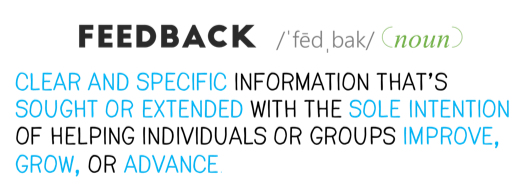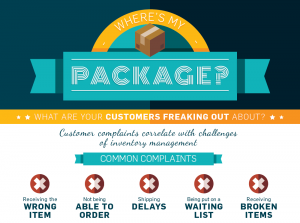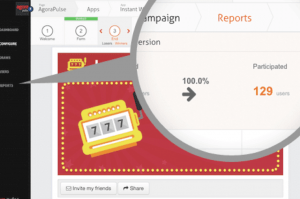For many of us, “feedback” is a dirty word that we associate with painful conversations, bias, politics, resentment, and self-doubt. Feedback certainly has a branding problem — a negative reputation we’ve collectively built one lousy experience at a time. It isn’t that we all set out with bad intentions; some of the worst experiences frequently arise out of a genuine desire to do the right thing by providing honest feedback to improve performance. However, many of us never learned how to wield the true positive power of feedback. Instead, we rely on old counter-productive models: saving feedback up and then heaping a big load of it on an unsuspecting employee, smashing tough feedback between two bits of disingenuous compliments, or relying on brutal frankness, to name just a few. These approaches most certainly are not very helpful.
But, think about the potential positive power of feedback. It shouldn’t be a bad thing. When we get it right, feedback lifts us up, helps us understand our strengths, shows us pathways to achieve that next step, and sometimes even changes the course of our lives.
So, how do we go about getting it right? Let’s start by setting a firm foundation for productive feedback by agreeing on a new definition.

CLEAR AND SPECIFIC – If you want to provide feedback that helps, then it needs enough specificity to make it meaningful and helpful.
We must redefine feedback in a manner that supports our true intent and desired outcomes. Each word in this definition was carefully selected, so let’s examine what’s here:
SOUGHT AND EXTENDED – Feedback is as much about soliciting as it is about offering, with the aim of bringing information into a shared conversation.
SOLE INTENTION – If the feedback isn’t intended to help individuals or teams thrive and grow, then why offer it or seek it?
In practical terms, how do we go about living up to this new definition? Let’s start with these four things you might think are feedback, but actually aren’t. Then, let’s explore how specifically to change these approaches.
- DON’T rely on simple platitudes. DO provide specific and relevant details.
- DON’T try to “fix” someone. DO offer feedback as a helpful tool they can use.
- DON’T indulge only in “manager tells.” DO engage in a conversation.
- DON’T rely on traditional annual reviews. DO make feedback part of an ongoing relationship and a continuous conversation.
Let’s explore each of these approaches in turn:
DON’T rely on simple platitudes. DO provide specific and relevant details.
Obviously, this recommendation goes straight to the heart of the “clear and specific” requirement of our new and improved definition on feedback. We’ve all experienced this dynamic. It’s well intended, of course! If I tell you, “working with you inspires me,” that’s a lovely thing to say, and I encourage you to share such positive thoughts often. Providing positive reinforcement more frequently is one of the keys to improving feedback. However, this statement lacks specificity and could even misdirect. How would you know what you should continue doing, or do more of? But if I say, “the time you spend focused on helping me learn and understand the work we’re doing together inspires me,” I’ve added clarity and specificity. Now you know what it is you’re doing that is having a real and positive impact on me. Hopefully, that second statement helps you understand your own strengths or superpowers. It provides insight into what you can do more of for me and others. Simply said, feedback that provides clear understanding inspires learning and action. Even better, feedback like this, delivered more frequently, gains exponential power.
In my next three blogs, we will explore the remaining recommendations. In the meantime, start practicing clarity and specificity (frequently!) today, and you’ll be off on your journey to #FIXFEEDBACK.
Are you ready to take the pulse of employee engagement? Get started by accessing Achievers’ white paper.
Business & Finance Articles on Business 2 Community
(18)






